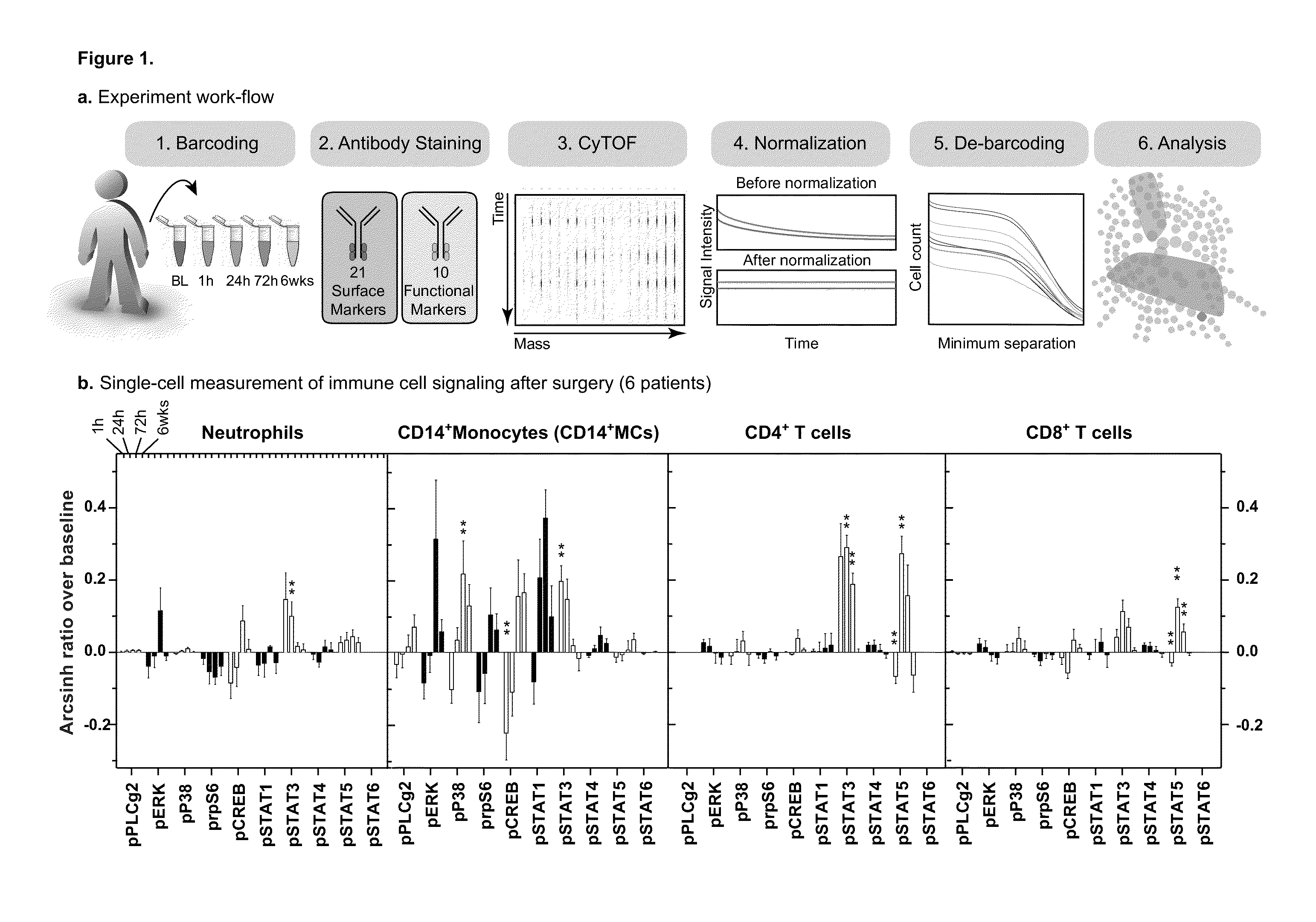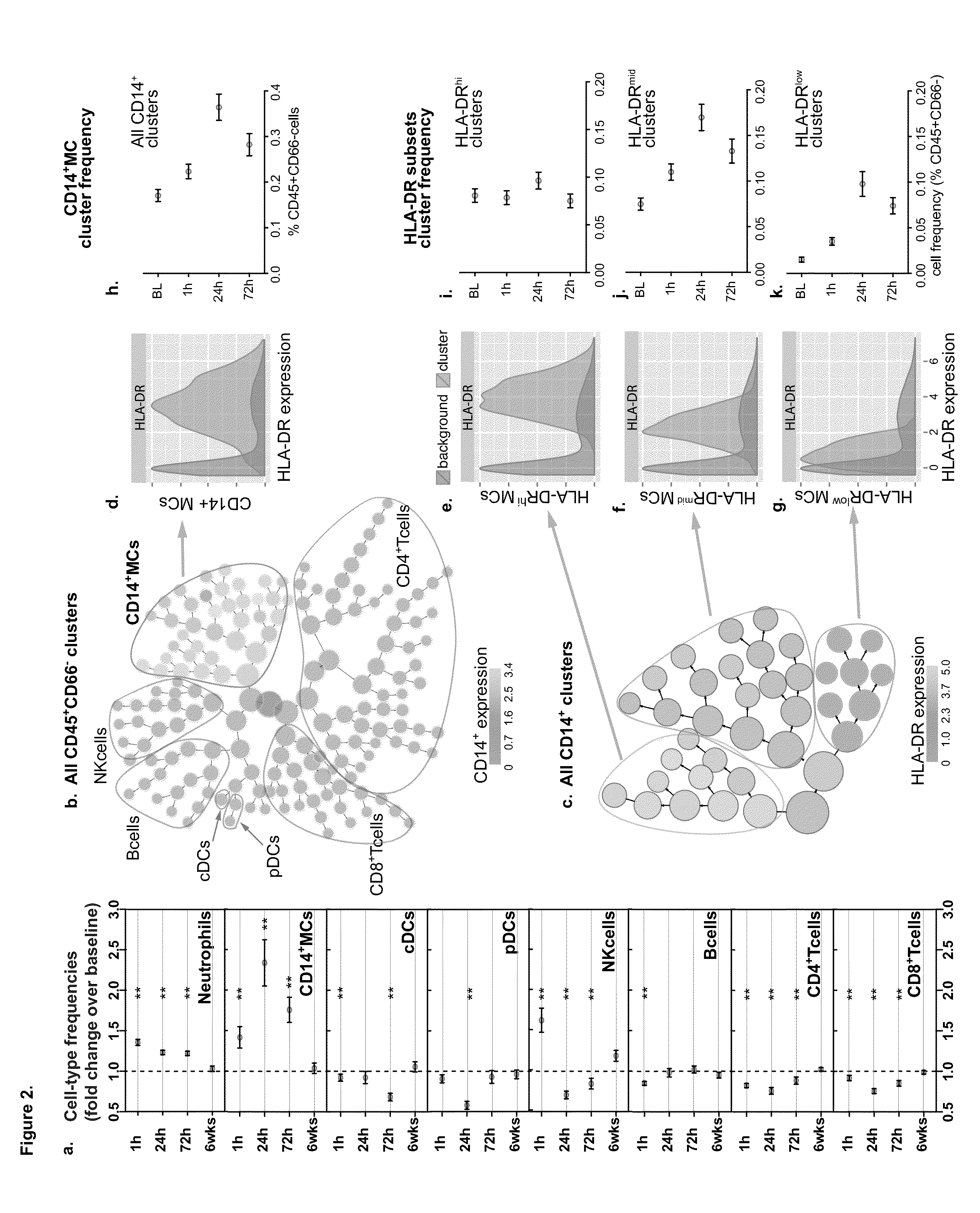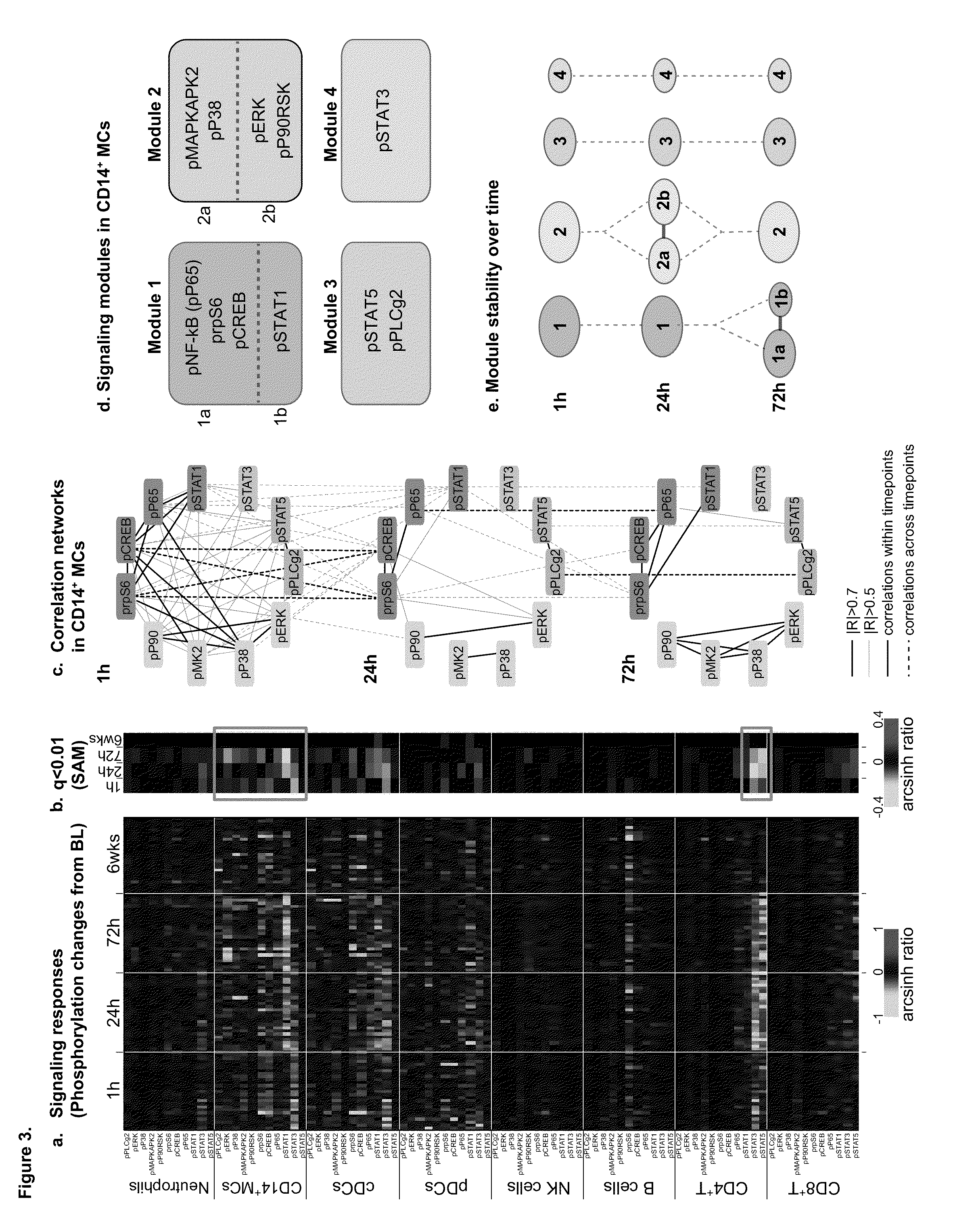Compositions and methods of prognosis and classification for recovery from surgical trauma
a surgical trauma and classification technology, applied in the field of surgical trauma classification and classification, can solve the problems of not being able to examine the functional in-vivo response of immune cell subsets on available platforms, affecting the post-surgery follow-up, and causing significant personal suffering and major societal and economic costs
- Summary
- Abstract
- Description
- Claims
- Application Information
AI Technical Summary
Benefits of technology
Problems solved by technology
Method used
Image
Examples
example 1
Single-Cell Deep Immune Profiling by Mass Cytometry Reveals Trauma-Specific Immune Signatures that Contain Surgical Recovery Correlates
[0174]Delayed recovery from surgery causes substantial personal suffering, with consequent societal and economic costs. The extent to which immune mechanisms determine recovery after surgical trauma remain ill-defined. Single-cell mass cytometry was utilized to measure the expression levels of 35 cell-surface proteins and intracellular phospho-specific epitopes in serial whole blood samples collected from 32 patients undergoing primary hip replacement. The simultaneous analysis of 14,000 phosphorylation events across 8 immune cell subsets revealed remarkably uniform signaling responses among patients, demarcating a “trauma-specific” immune signature.
[0175]When regressed against clinical parameters of surgical recovery, including functional impairment and pain, strong positive correlations were found with STAT3, CREB and NF-κB signaling responses in s...
example 2
Ex Vivo Testing
[0229]The ability to elicit responses as described in Example 1 were tested in an ex vivo system. Such responses allow detection of patient differences in immune responses to surgery that are associated with recovery.
[0230]A series of stimulations to peripheral blood samples taken from surgery patients at pre-operative baseline were performed, including contacting the blood sample with one or more of cytokines, growth factors, and bacterial antigens, in an effort to elicit a cellular inflammatory response ex vivo. The baseline sample from each patient was divided into five aliquots and contacted with either IL6, IL10, IL2+GMCSF, or LPS, leaving one sample untreated. Samples were incubated at 37° C. for 15 minutes, following a fixation for 10 minutes, and then frozen in the fixation / stabilization buffer. Samples were then processed for mass cytometry as described in Example 1 and FIG. 1.
[0231]Using the computational method described in Example 1, (hierarchical clusteri...
PUM
 Login to View More
Login to View More Abstract
Description
Claims
Application Information
 Login to View More
Login to View More - R&D
- Intellectual Property
- Life Sciences
- Materials
- Tech Scout
- Unparalleled Data Quality
- Higher Quality Content
- 60% Fewer Hallucinations
Browse by: Latest US Patents, China's latest patents, Technical Efficacy Thesaurus, Application Domain, Technology Topic, Popular Technical Reports.
© 2025 PatSnap. All rights reserved.Legal|Privacy policy|Modern Slavery Act Transparency Statement|Sitemap|About US| Contact US: help@patsnap.com



